Written by Marie Hoff and photographed by Paige Green
Shearing is that unique seasonal dance between human and fiber animal. It’s the act that offers us wool and fine fibers to wear, knit, and sleep upon. But for many outside the agricultural sphere, shearing appears as a cause for confusion or even concern. To learn more about this critical step in the process from soil to skin, Marie Hoff explored the age-old tradition between fleece and garment. We invite you to join us in a three-part series on shearing, moving through questions, considerations, and toward transparency and greater understanding of the processes that clothe us. This is the second installment (read part one here) of a three-article series on sheep shearing and animal welfare.
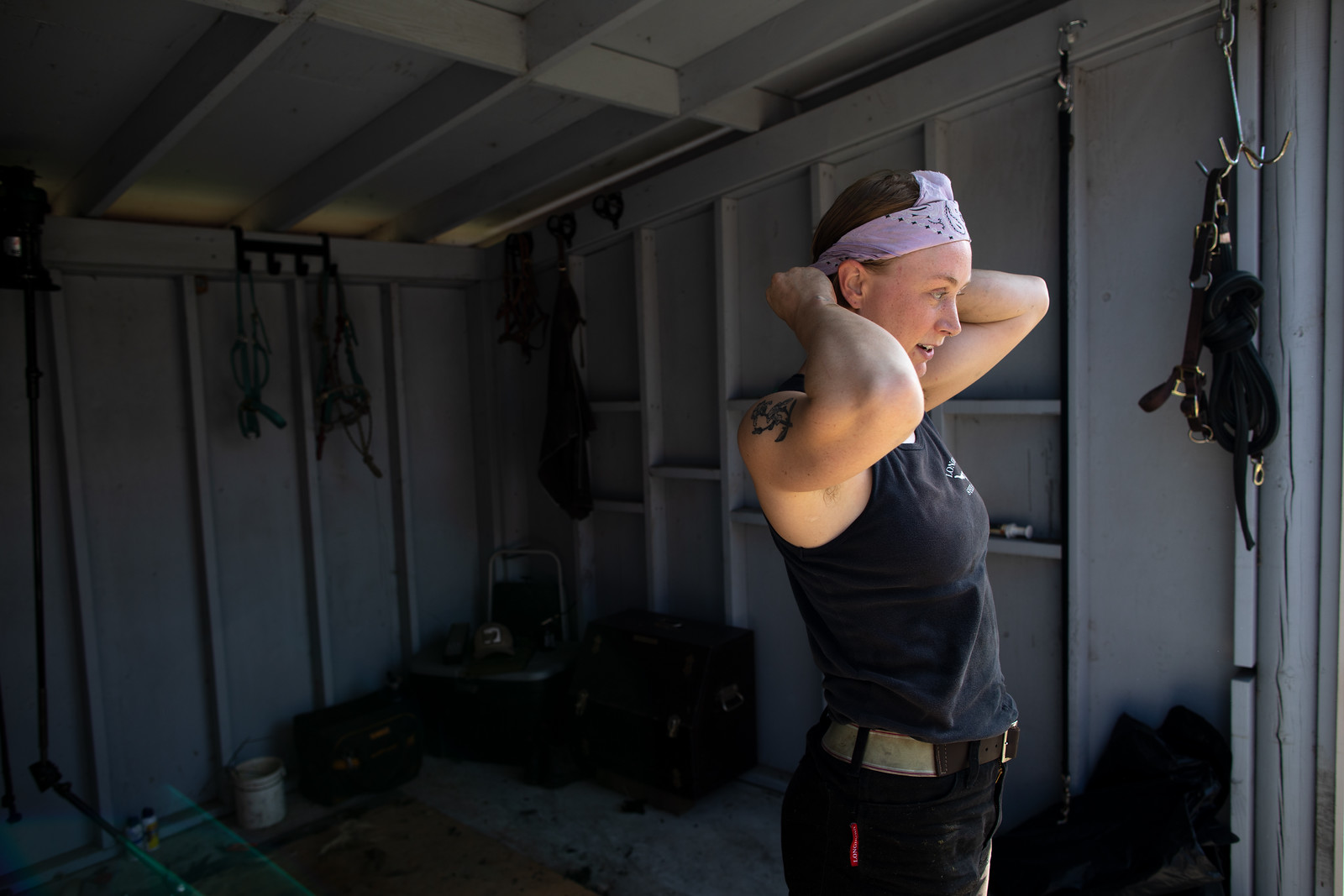
“I came of age in a time when technology was becoming really widespread in most industries,” shares Lora Kinkade on a springtime afternoon as she prepares for shearing — “but I had more interest in hands-on experiences that were more engaged with the world, so agriculture felt like a natural direction to take. I wanted to do really fundamental, important work, that was being lost, but that needed to be preserved.”
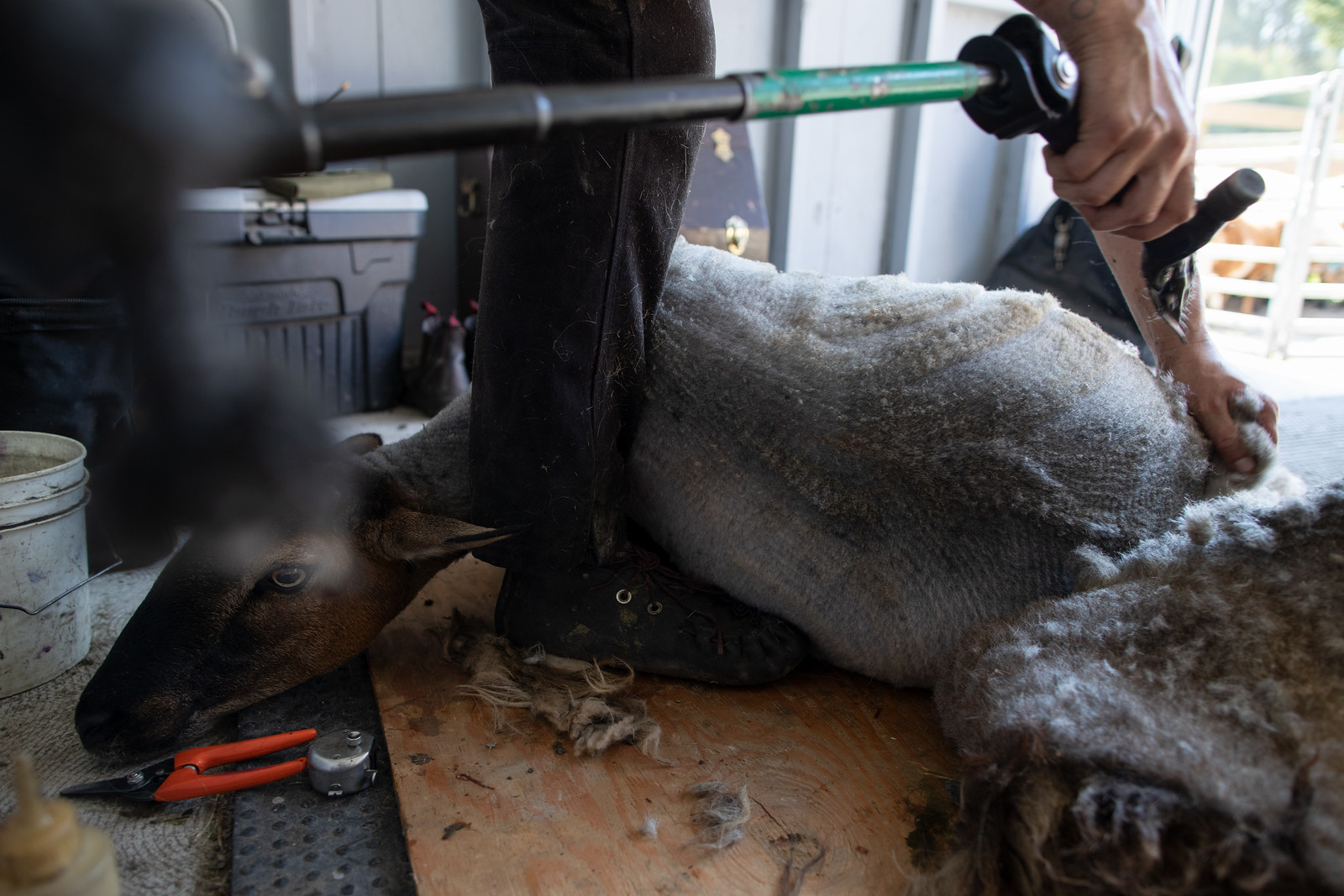
Farmer and sheep-shearer Lora Kinkade lives and works in Northern California, but her work shearing sheep takes her up and down the state, and sometimes into Oregon and Nevada. As a shearer she often crosses many boundaries, not just state lines, but between urban and rural communities, human and animal interactions, intellectual and physical labor, and differing political perspectives. In between these dichotomies she finds a new way forward, mixing and matching practices and ideas that develop her interests. She blends the act of existing, together with plants and animals, into an art.
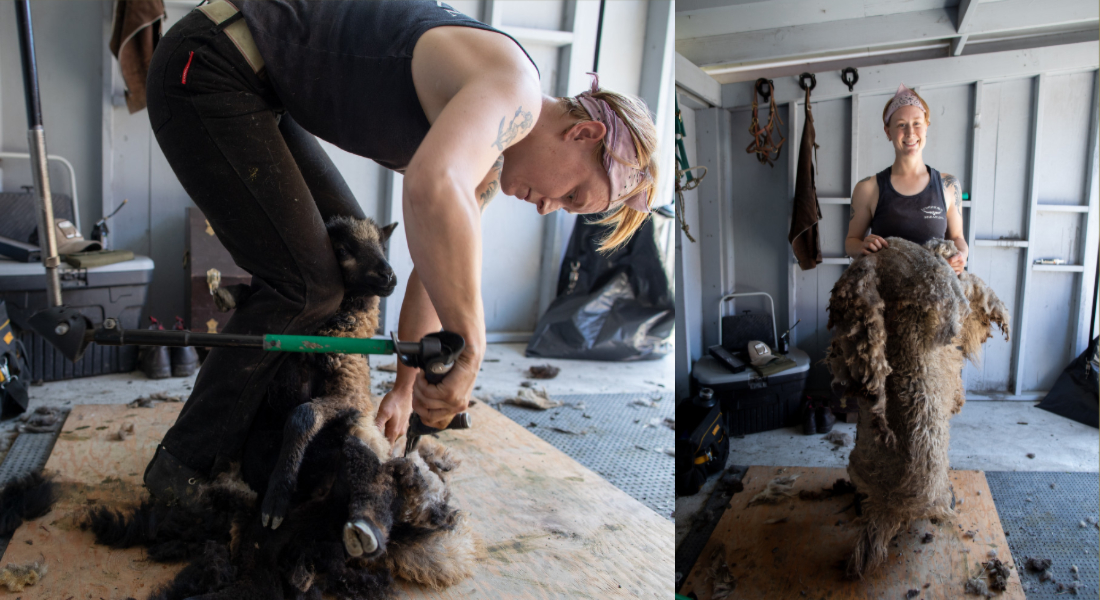
“In my early 20s I wanted to pursue things that were scary or challenging as a way of challenging my intellect, so I pursued things that felt uncomfortable to me, yet deeply familiar, like farming or shearing sheep,” reflects Lora.
After receiving a degree in poetry from the University of California at Santa Cruz, Lora began to diverge from a more academic career and started learning about farming. She worked on a farm abroad in France, and more locally, worked at Petaluma’s Green String Farm. She volunteered at Bodega Pastures, a Fibershed Producer member in West Sonoma. From there, she worked at other local farms, such as New Family Farm, and began doing her own farming projects, including growing dye plants for the Oakland-based yarn shop A Verb For Keeping Warm.
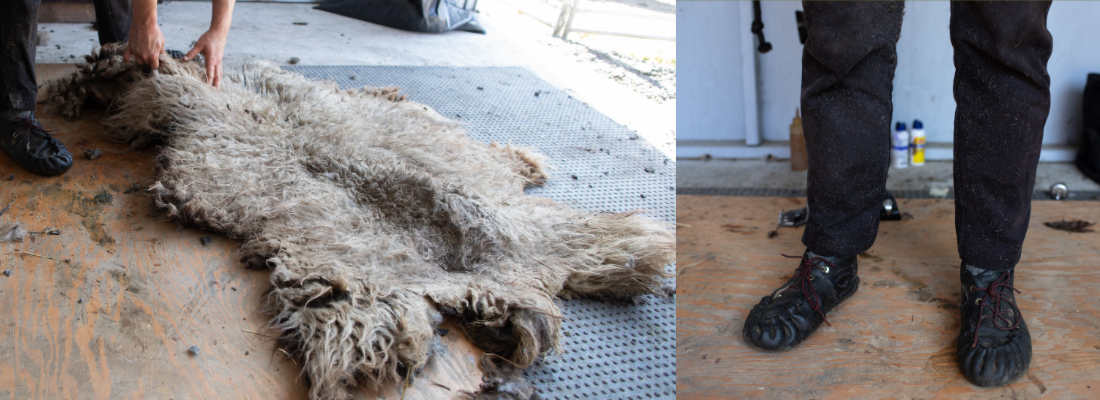
She began to learn to shear sheep when she realized the need for shearers, first studying in 2015 through the week-long shearing program offered by the University of California Cooperative Extension at Hopland Research and Extension Center. Motivated by a dedication to animal welfare, Lora continued to shear after the program ended, building her strength and endurance, as well as expertise. She currently shears both small-scale flocks and those at the commercial scale. For the small-scale flocks she can shear on her own, contracting with individual farmers independently. For commercial flocks she shears on a shearing crew, one of many shearers working together to shear hundreds or thousands of sheep.
“There is something to be said for efficiency, the best thing you can do for a sheep when shearing, other than doing it cleanly, is to do it as quickly as you can while keeping the sheep calm. The safest way to handle an animal is when the power dynamic is really clear. The ambiguities can feel unsafe. When an animal feels that it can get away from you, that’s when accidents happen.”
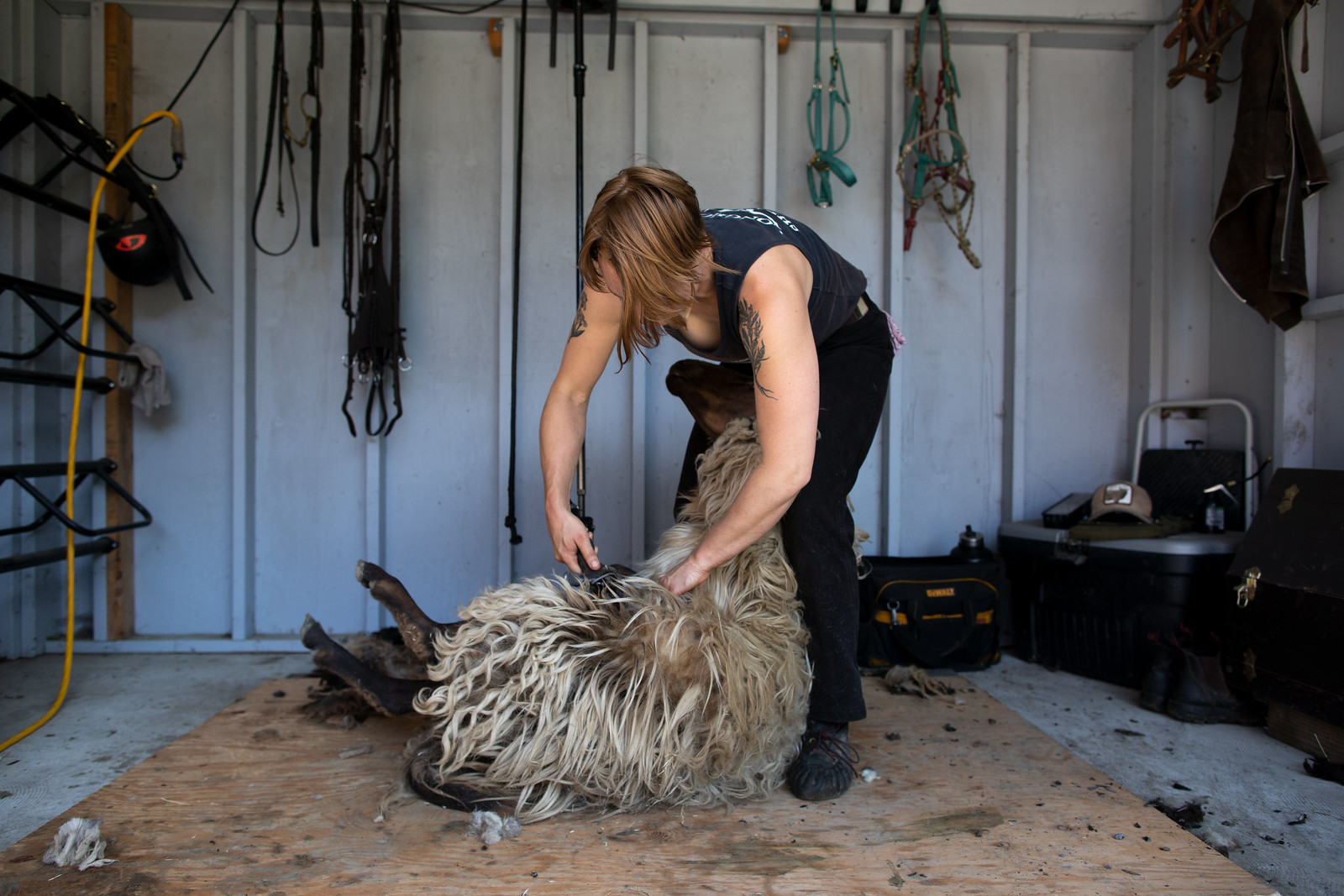
Shearing sheep is not only about learning specific movements and using a shearing machine, it’s also about relationships and decision-making. Power dynamics between people, and between people and animals, can be a daunting challenge. But from that challenge emerges a goal: to shear a sheep so that it will be healthy, and so people can make use of the wool that the sheep no longer needs during the summer. Accomplishing this task requires skill and care, as well as an endurance and embodiment that Lora thrives in — seems to revel in, even.
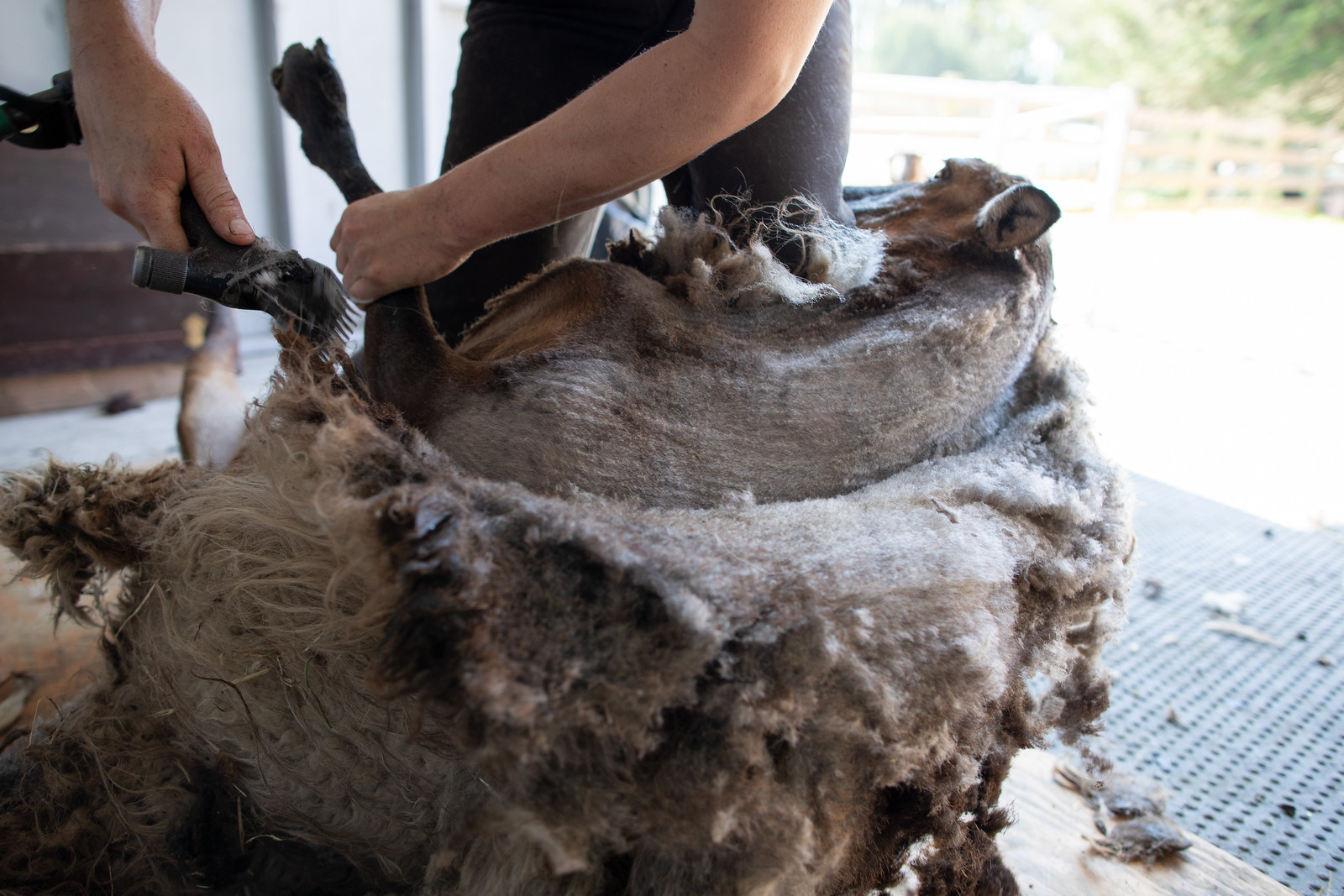
“I personally feel invested in commercial sheep shearing because I want wool to be relevant,” she says. Few people outside the industry are familiar with shearing sheds, and although social media is changing this, the attention focused on shearing as a practice has not always been conveyed with clarity or accuracy. As a commercial shearer, Lora participates on two separate shearing crews, and notes the differences in culture between them. Each have their own tone and approach to handling, and as Lora says, “the person running the crew and their communication skills can have a big impact.” Lora is a proponent of low-stress handling, first popularized by Bud Williams and further promoted today by Temple Grandin, among others. Lora believes that the best ways to spread these approaches are through engagement and participation, working with people and animals through many different cultural contexts, and valuing the hard, physical work agriculture often necessitates.
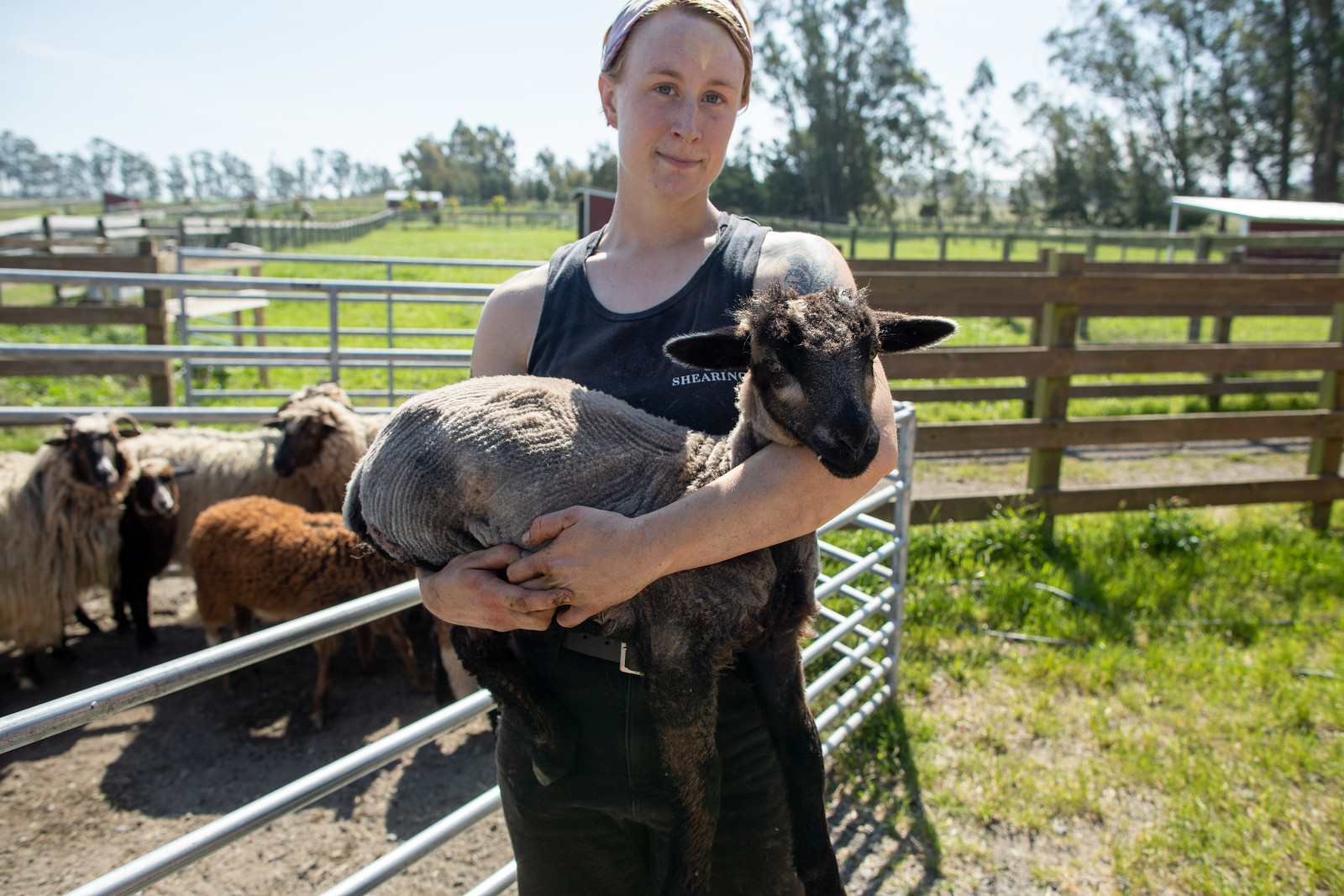
“I am fierce for becoming comfortable with ambiguity, as a community. Which is a way of softening fierce. I am fierce for learning to empathize with those (people, creatures, systems) we assume we already know or understand.” — Lora Kinkade

